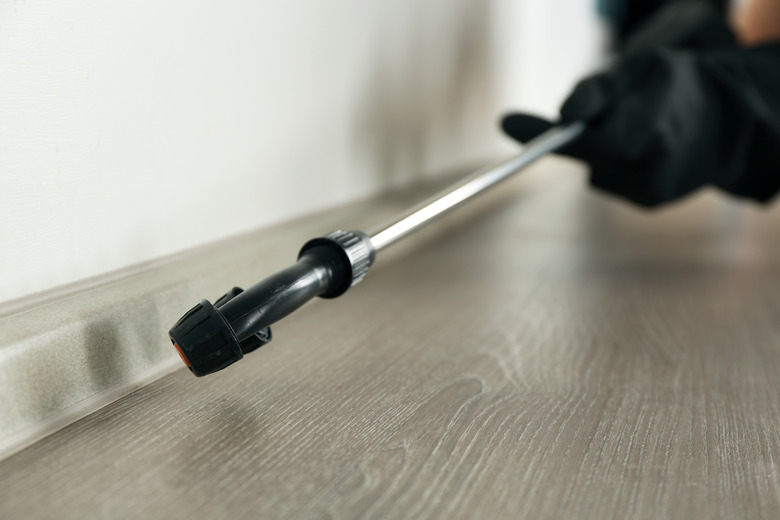Common Household Flea-Like Bugs
We may receive a commission on purchases made from links.
If you have pets and a bug infestation in your home, one of the first culprits you'll likely suspect is the flea. These tiny — 1/16- to 1/8-inch-long — wingless hopping insects feed on pets' and peoples' blood; cause small, itchy bites; and lay an average of 27 eggs per day. In reality, your insect invaders may not be fleas after all. There are at least four common household insects that could be and often are mistaken for fleas.
Annoying but Harmless Springtail
Annoying but Harmless Springtail
Like fleas, springtails' average size is 1/16- to 1/8-inch-long. Also like fleas, springtails are wingless, medium to dark in color, reproduce rapidly, and have a furcula — a forked appendage — that allows them to jump. Springtails thrive in moist conditions and often enter homes in potting soil.
If you discover that your bug problem is a springtail infestation, the good news is that these insects do not bite or sting. They don't damage property, food, or clothing either; they're basically just a nuisance. Controlling moisture and leaks in and around your house is the best way to combat springtails.
Black Carpet Beetle
Black Carpet Beetle
Measuring about 1/8 inch long as adults, black carpet beetles — not to be confused with the furniture or varied carpet beetle species — resemble fleas. They are tiny, oval in shape, and dark and shiny in color. Like fleas, they're also pervasive, difficult-to-control household pests. Carpet beetles thrive in the sun and are often carried indoors on cut flowers. The best way to get rid of them is to vacuum frequently, since lint, hair, and dead bugs are carpet beetle food sources.
Confused Flour Beetle
Confused Flour Beetle
This pest with the curious name has a few flea-like characteristics: It's dark, shiny, oval, and measures about 1/7 inch long. This insect's name originates from the fact that it's often confused with the red flour beetle and because you'll likely find it in your kitchen contaminating your grain-based goods, such as flour, meal, crackers, and cereals. Confused flour beetles lay eggs in these products. Eventually the eggs hatch, further contaminating your food.
If you find confused flour beetles, throw away all infested food items, thoroughly vacuum your pantry and kitchen, and store all new foods in airtight containers.
Brown Dog Tick Nymph
Brown Dog Tick Nymph
When not engorged with blood, brown dog ticks are flat and just 1/8 inch long — similar to fleas. Juvenile ticks are even smaller and more flea-like in appearance. When engorged with blood, ticks may balloon to half an inch or so long, at which time they look nothing like fleas. Brown dog ticks usually enter a home on a pet and lay large numbers of eggs that, when they hatch, can quickly lead to an infestation.
If you find just one tick in your home, you should treat your home or call a pest-control company immediately. Ticks can attach to the skin and cause painful bites. If there is any good news, perhaps it's that the brown dog tick is not a tick species that transmits Lyme disease.
